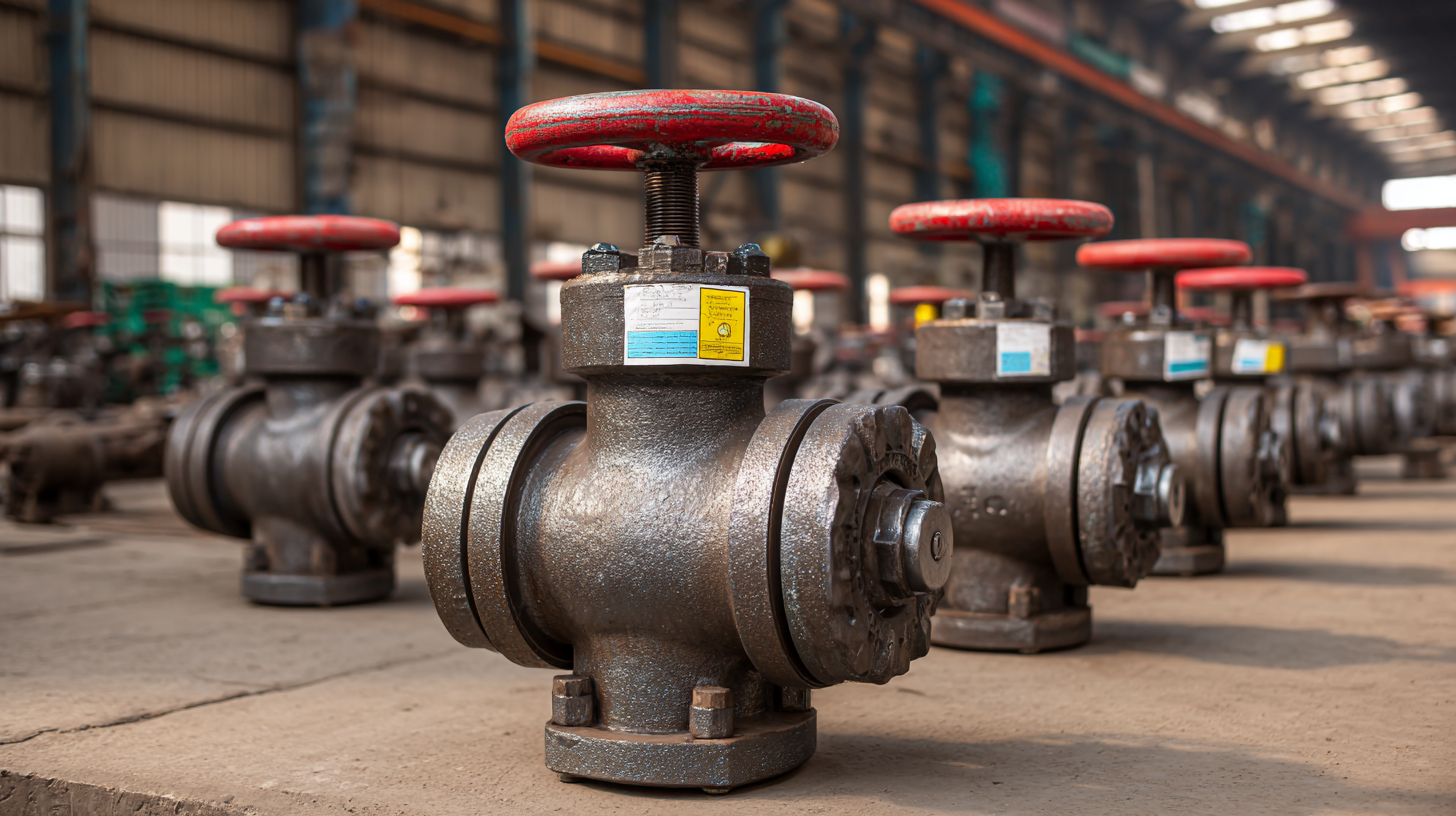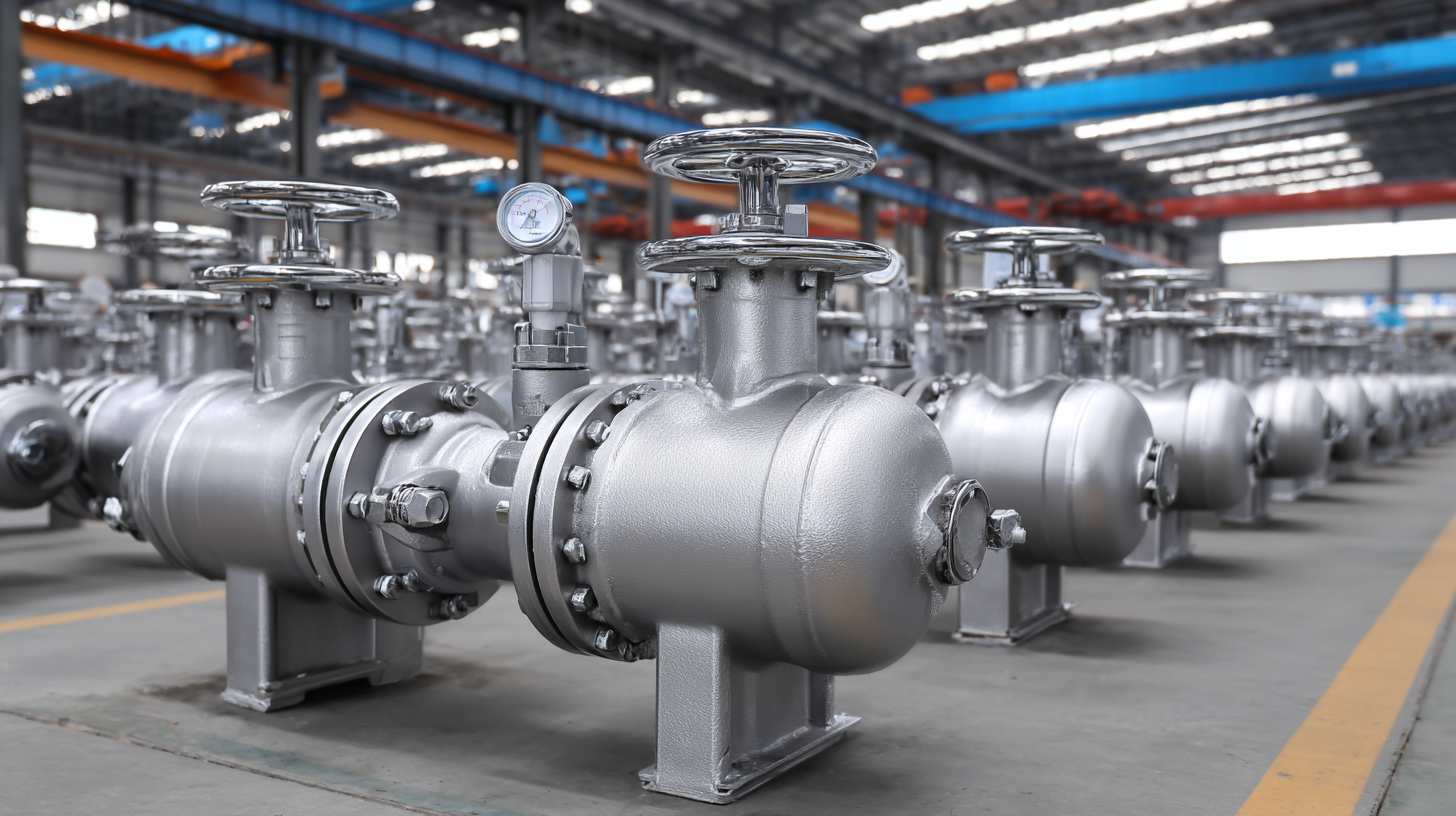MENUMENU
In the ever-evolving landscape of industrial applications, selecting the right components is crucial for ensuring efficiency and reliability. Among these essential components, ball valves stand out as a favored choice due to their ability to provide tight seals and precise control over fluid flow. As we delve into the latest trends for 2025, it's vital to compare top-rated ball valves that cater to various industrial needs. This comprehensive analysis not only highlights the technological advancements and certifications that differentiate these valves but also sheds light on their performance in diverse working environments. Whether you're looking to enhance your system’s functionality or increase operational safety, understanding the current offerings in the ball valve market will empower you to make informed decisions that align with future expectations. Join us as we navigate the ultimate comparison of ball valves, setting the stage for a productive year ahead in industrial applications.

 When selecting a ball valve for industrial applications, understanding key features is crucial to ensure optimal performance and reliability. One primary consideration is the valve's construction materials, which must withstand specific pressures and temperatures typical in industrial environments. The choice of materials not only impacts the valve's durability but also its resistance to corrosion and potential leakage. Recent innovations in valve design, such as the introduction of cryogenic ball valves, highlight the importance of controlling fugitive emissions while maintaining efficiency.
When selecting a ball valve for industrial applications, understanding key features is crucial to ensure optimal performance and reliability. One primary consideration is the valve's construction materials, which must withstand specific pressures and temperatures typical in industrial environments. The choice of materials not only impacts the valve's durability but also its resistance to corrosion and potential leakage. Recent innovations in valve design, such as the introduction of cryogenic ball valves, highlight the importance of controlling fugitive emissions while maintaining efficiency.
Additionally, the functionality of actuators plays a significant role in the effectiveness of ball valves. With various types such as electric, hydraulic, and pneumatic actuators available, it is essential to choose one that aligns with the specific operational requirements. For instance, in applications like solar tracking, the choice of an actuator can significantly impact responsiveness and control. It's also important to factor in cost efficiencies when selecting valves, balancing both initial costs and long-term operating expenses. This comprehensive approach ensures that the selected ball valve meets not just the functional needs but also contributes to the overall performance of industrial processes.
When it comes to selecting the right ball valves for industrial applications, understanding the performance metrics of top-rated brands is crucial. This comparison delves into the key features that distinguish leading manufacturers in the market. For instance, companies like Emerson and Swagelok have established themselves through innovative designs that enhance flow efficiency while maintaining robust durability in high-pressure environments. Their valves often come equipped with exceptional sealing capabilities, which significantly reduce leakage risks, a critical factor in ensuring safety and operational integrity.
Additionally, the material composition plays a vital role in the performance of these ball valves. Brands such as Val-Matic and Honeywell utilize advanced materials like stainless steel and reinforced plastics, which not only extend the lifespan of their products but also enhance resistance to corrosion and wear. Furthermore, performance metrics such as torque ratings, maximum operating pressure, and temperature tolerance are essential for evaluating the suitability of a valve for specific industrial applications. By conducting a thorough comparative analysis, end-users can make informed decisions that align with their operational requirements and safety standards.
This chart compares the performance metrics of various ball valves based on their flow rate, durability, and operational pressure. It provides insights into which valves may best suit industrial applications.
When selecting ball valves for industrial applications, understanding the role of innovative materials is crucial to ensuring longevity and optimal performance. Recent studies indicate that advanced materials such as high-density polyethylene (HDPE) and reinforced thermoplastics can enhance resistance to corrosion and temperature fluctuations, significantly extending the lifespan of ball valves. According to the "2022 Industrial Valve Market Report", valves made from these materials can outperform traditional metal valves by up to 30% in terms of durability, especially in aggressive chemical environments.

Moreover, the rise of composite materials has reshaped the landscape of ball valve manufacturing. These composites not only provide excellent strength-to-weight ratios but also exhibit superior resistance to wear and tear. For instance, valves incorporating carbon fiber-reinforced polymers have shown to sustain high performance even under extreme pressure variations, with data from the "2023 Valve Technology Review" indicating an impressive 25% reduction in maintenance costs over a 10-year period. As industries continue to prioritize reliability and efficiency, the adoption of these innovative materials will be key to enhancing the operational lifetime of ball valves across various applications.
As industries evolve, the integration of advanced technologies into ball valve systems is becoming increasingly essential. Future trends in ball valve technology are leaning towards automation and smart systems that allow for real-time monitoring and data collection. This advancement not only enhances operational efficiency but also contributes to predictive maintenance, reducing downtime. Industries are shifting towards more sustainable practices, and the incorporation of smart technologies in ball valve operations can facilitate better resource management and energy efficiency.
Furthermore, the use of advanced materials and coatings is also on the rise. Innovations in material science are leading to the development of ball valves that can withstand harsher conditions and extend service life. These improvements are critical for industries like oil and gas, where durability and reliability are paramount. As the demand for higher performance increases, manufacturers are exploring ways to integrate these materials with digital solutions, paving the way for more resilient and intelligent valve systems that can align with the future needs of industrial operations.
| Valve Size (inches) | Material | Pressure Rating (psi) | Temperature Range (°F) | End Connection Type | Automation Capability |
|---|---|---|---|---|---|
| 1 | Stainless Steel | 1500 | -50 to 450 | Standard Flange | Yes |
| 2 | Carbon Steel | 2000 | -20 to 400 | Welded | Yes |
| 3 | PVC | 250 | 32 to 140 | Socket | No |
| 4 | Brass | 800 | -40 to 200 | Threaded | Yes |
| 5 | Ductile Iron | 150 | -20 to 180 | Flanged | No |
When it comes to industrial applications, the choice of ball valves significantly impacts operational efficiency and cost management. A recent report by the International Society of Automation reveals that high-quality ball valves can reduce maintenance costs by up to 20% through enhanced reliability and durability. Investing in premium materials and superior design not only ensures longer lifespan but also minimizes the risk of leaks and failures, which can lead to costly downtimes.
Moreover, the cost-benefit analysis highlights that while premium ball valves may have a higher upfront cost, they can yield significant savings over time. According to a study by the Valve Manufacturers Association, facilities that upgraded to high-performance ball valves experienced a 15% increase in flow efficiency and a 30% reduction in energy consumption. By prioritizing quality, industries can achieve greater efficiency and sustainability, ultimately resulting in lower operational costs and a higher return on investment.